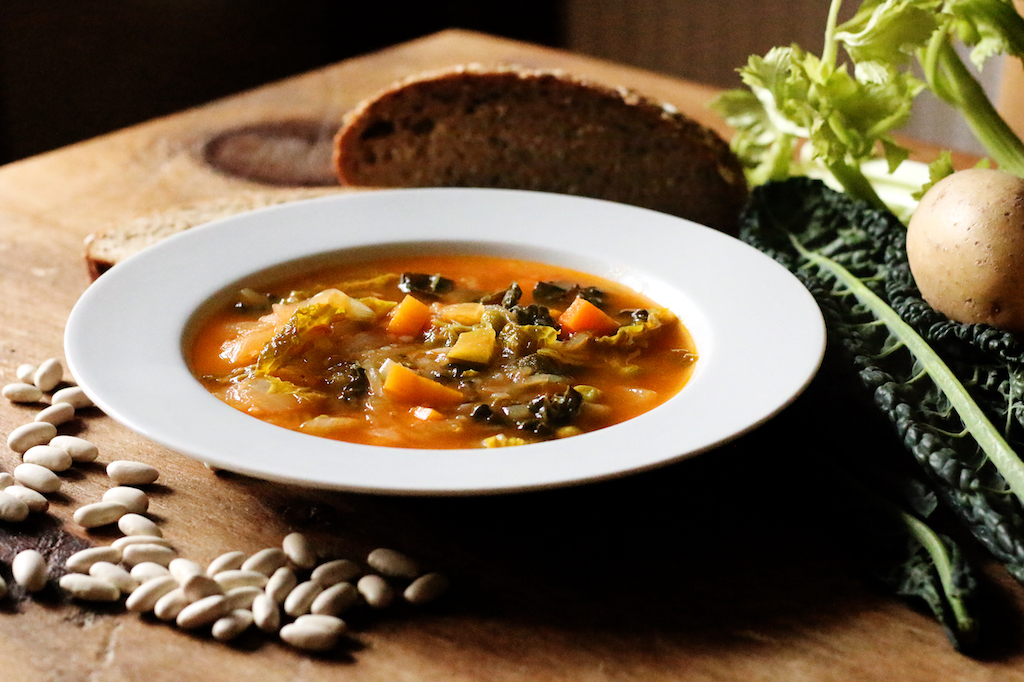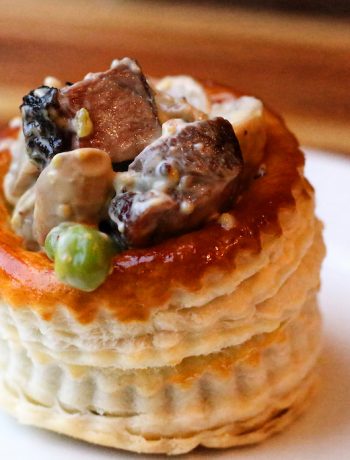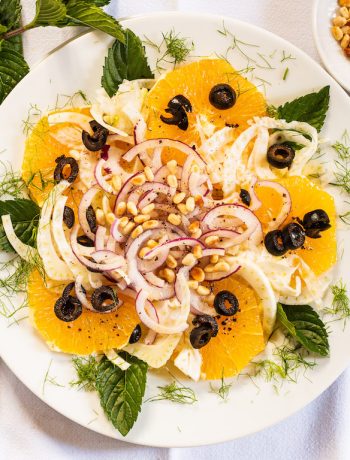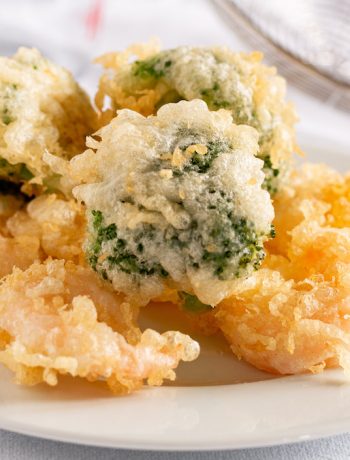If there was every a dish with no fixed recipe, then it has to be vegetable soup. Vegetable soups have been the staple source of cheap, warm food ever since man was able to make fire. The first verified evidence of man’s ability to control fire was successful pyromania by our heavy-browed, faintly ugly ancestors Homo erectus These guys worked out how to burn stuff about 600,000 years ago. This means that the of idea vegetable soup is so old that there is no way there is an original written recipe, and therefore, every single variation of it can be considered ‘authentic.’

In Italy there are essentially two kinds of soup. One is a ‘zuppa,’ which is a simple soup, and the other is a ‘minestra,’ which is used to describe a rich, hearty soup. It is the latter that gives its name to minestrone. In the pre-Roman period, there are records of these thick soups being made with spelt flour and whatever vegetables were to hand. Once the Romans had perfected the art of invasion, they built a road network that enabled rapid movement of goods (including food) from the provinces back to the capital. With the influx of new ingredients, the contents of the minestra changed to keep step. Around this time, people started adding beans to their soups. In 30AD, Marcus Apicius wrote in De Re Coquinaria of a soup of vegetables, lard, wheat grains and fava beans. This soup bears much resemblance to a modern minestrone, but appears to contain … brains. You gotta love the Romans.

The 1400s saw the arrival of the Spanish Aragonese in the Po valley. The Aragonese busied themselves with planting rice paddys (risaie). Long before anyone dreamed up the idea of risotto, the Spanish rice got dumped in the minestra.
Finally, in the mid 1500s, European explorers returned home with potatoes from Peru and tomatoes from Mexico. Just like the Roman roads before them, the new trade routes tipped more schmoo into Italian minestra, and now we have something that we can recognise from the zuppa section of an Italian restaurant menu.
While minestrone has its origins in using up leftovers in a haphazard, ‘like mama’ way, the 18th Century sees recipes being written down, and fresh vegetables being sourced for the pot. This is something of a shame, as there is nothing so noble as elevating random leftovers to a hearty meal.
The recipe given here is adapted from Anna Del Conte and describes a traditional minestrone with a long cooking time, rice, and no pasta. Common variations include simmering faster for quicker delivery, and swapping out the rice for pasta. The classic pasta version originates from Tuscany.
Minestrone
Ingredients
- 150g dried beans (e.g. cannellini or borolotti), soaked in water for 12+ hours
- 50g unsalted butter
- 50g pancetta or streaky bacon, cut into cubes
- 3 onions, sliced
- 4 carrots, diced
- 2 sticks of celery, diced
- 2 courgettes, diced
- 100g green beans, diced
- 100g frozen garden peas, defrosted
- 200g mixed cabbage (e.g. Savoy and cavolo nero), shredded (note that for all the vegetables, just go with the season)
- 2 litres chicken stock
- 350g potatoes, halved
- 225g canned plum tomatoes, roughly chopped
- 175g risotto rice
- 75g Parmesan, grated
Instructions
In a large, stock pot, melt the butter and fry the bacon and onions for 5 mins. Add the carrots and celery, and cook for another 5 mins until softening. Add the white beans, and stir them through the fatty vegetable mixture. Cook for 5 mins. Add the courgettes, green beans, peas and cabbage and stir through.
Add the stock, potatoes and tomatoes. Season liberally to taste. Bring the broth to the boil, turn it down, cover and simmer on a very low heat for 3 hours.
After 3 hours, lift out the potatoes with a slotted spoon, mash them and add them back to the soup. Adjust the seasoning again.
Add the rice and cook for 10–15 mins until al dente. Stir in the parmesan.
Serve in deep bowls with crusty ciabatta. Grate more Parmesan over the top.
Notes
This is easy to make into a vegetarian dish by omitting the bacon and using vegetable stock. Like any stewed dish, minestrone will be better if made the day before and reheated to serve; however, The Nosey Chef does not recommend this for any dish containing rice due to the risk of severe food poisoning.






No Comments